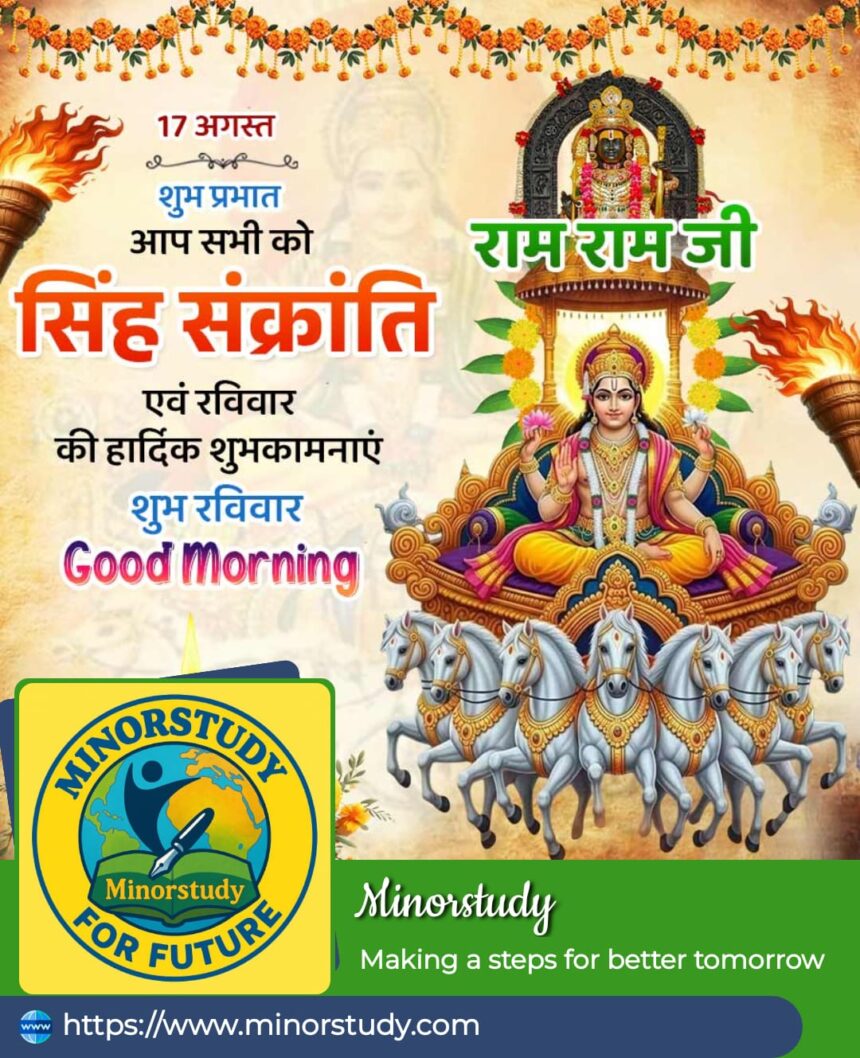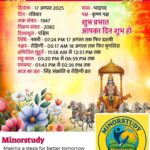7 Amazing Facts About Leo Sankranti That Will Transform Your Understanding
Leo Sankranti, also known as Simha Sankranti, is an important event in Sanatan Dharma marking the transition of the Sun from Cancer (Karka Rashi) to Leo (Simha Rashi). This celestial occurrence happens every year, usually in mid-August, and its exact date is determined according to the Panchang (Hindu calendar).
- History and Background of Leo Sankranti
- Timeline of Leo Sankranti Observance
- 7 Amazing Facts About Leo Sankranti
- 1. Astrological Significance
- 2. Spiritual Importance
- 3. Health Benefits
- 4. Community Bonding
- 5. Agricultural Relevance
- 6. Charity and Social Welfare
- 7. Cultural Legacy
- FAQs About Leo Sankranti
- Significance of Leo Sankranti in Daily Life
- Wishing Traditions
- Important Points to Remember
- Conclusion: Leo Sankranti’s Impact on Society
More than just an astronomical milestone, Leo Sankranti has profound spiritual, cultural, and societal significance, influencing health, prosperity, and daily life practices according to Sanatan Dharma.
History and Background of Leo Sankranti
The tradition of observing Sankranti has been part of Vedic and post-Vedic culture for thousands of years. “Sankranti” signifies the transition of the Sun from one zodiac sign to another, and Leo Sankranti specifically celebrates the Sun’s entry into Leo, the sign associated with strength, courage, and leadership.
In Hindu astrology, the Sun is revered as Surya Dev, the divine source of energy, life, and enlightenment. Observing Leo Sankranti is believed to enhance personal vitality, spiritual strength, and auspiciousness, aligning human life with cosmic rhythms.
Timeline of Leo Sankranti Observance
Ancient Times – Leo Sankranti observed based on astronomical calculations by sages.
Vedic Era – Rituals, fasting, and prayers to Surya Dev became standard practices.
Medieval Period – Community gatherings, charitable acts, and spiritual discourses during Sankranti were emphasized.
Modern Era – The festival continues to be observed with temple rituals, sun worship, fasting, and meditation, blending tradition with contemporary lifestyles.
7 Amazing Facts About Leo Sankranti
1. Astrological Significance
Leo Sankranti marks the Sun’s entry into Simha Rashi (Leo), a zodiac sign associated with courage, confidence, and leadership qualities.
2. Spiritual Importance
Observing rituals on this day is believed to enhance spiritual awareness, inner strength, and self-discipline, making it an ideal time for meditation and yoga practices.
3. Health Benefits
Traditional practices encourage early morning sun salutations, holy baths, and specific diets, which promote digestion, vitality, and overall well-being.
4. Community Bonding
Leo Sankranti fosters social harmony, as families and communities gather for prayers, feasts, and charitable acts, reinforcing bonds and collective spiritual energy.
5. Agricultural Relevance
This period marks key agricultural transitions, particularly the preparation for monsoon harvests, making it culturally significant in rural and farming communities.
6. Charity and Social Welfare
Devotees are encouraged to donate food, clothing, and money to the needy, emphasizing compassion, generosity, and the societal role of festivals in Sanatan Dharma.
7. Cultural Legacy
The festival preserves ancient rituals, folk practices, and devotional music, keeping traditional Indian heritage alive while inspiring mindfulness, gratitude, and ethical living.
FAQs About Leo Sankranti
Q1: What is Leo Sankranti?
A: It is the day when the Sun transitions into Leo (Simha Rashi), observed with spiritual, cultural, and social practices.
Q2: When is Leo Sankranti celebrated?
A: Typically in mid-August, with the exact date based on the Hindu Panchang.
Q3: Why is it significant in Sanatan Dharma?
A: It signifies cosmic alignment, spiritual growth, and auspiciousness, influencing human health and prosperity.
Q4: How is Leo Sankranti observed?
A: Through sun worship, fasting, meditation, charitable acts, temple visits, and community gatherings.
Q5: Who can observe it?
A: Anyone seeking spiritual growth, health benefits, and alignment with cosmic rhythms.
Q6: What are the benefits of observing Leo Sankranti?
A: Improves physical health, mental clarity, spiritual awareness, social harmony, and preserves cultural heritage.
Significance of Leo Sankranti in Daily Life
Spiritual Enhancement – Meditation, sun worship, and fasting enhance self-discipline, mindfulness, and inner strength.
Health and Vitality – Morning rituals, sun salutations, and mindful diets promote physical and mental well-being.
Social and Community Engagement – Community prayers, feasts, and charity foster cooperation, empathy, and societal cohesion.
Cultural Preservation – Observing traditional rituals sustains regional and spiritual heritage.
Life Lessons – Teaches discipline, gratitude, ethical conduct, and alignment with natural and cosmic rhythms.
Wishing Traditions
During Leo Sankranti, people often greet each other with blessings like:
“May Surya Dev bless you with strength, courage, and prosperity on this Leo Sankranti.”
“Wishing you health, vitality, and spiritual growth during this auspicious transition of the Sun.”
Families and communities exchange prasad, sweets, and gifts, reinforcing spiritual and social connections.
Important Points to Remember
Confirm the exact date using Panchang before rituals.
Perform rituals with mindfulness, devotion, and understanding of their significance.
Emphasize charity and community service to amplify positive effects.
Adapt traditional practices safely to modern life while respecting spiritual intent.
Focus on lessons for personal growth, societal harmony, and spiritual well-being.
Conclusion: Leo Sankranti’s Impact on Society
Leo Sankranti is more than a celestial event; it is a spiritual, cultural, and societal milestone in Sanatan Dharma. Observing it helps individuals connect with cosmic rhythms, improve health, enhance social cohesion, and cultivate spiritual awareness.
The festival teaches discipline, gratitude, courage, and mindfulness, offering a roadmap for balanced living. Community participation, charitable acts, and spiritual observance during Leo Sankranti strengthen societal bonds and cultural continuity.
Ultimately, Leo Sankranti reminds us that cosmic awareness, traditional wisdom, and mindful observance can lead to spiritual growth, well-being, and social harmony, making it a cornerstone of human-centric practices in Sanatan Dharma.








